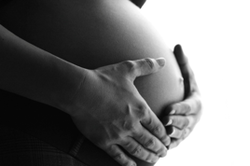|
Hi, folks! I was recently contacted by the Public Outreach Department at DrugWatch.com to help raise awareness of a serious women’s health issue: pelvic organ prolapse. Below is an informative article, contributed by Elizabeth Carrollton from DrugWatch.com. Please know that the treatments listed below are not listed in order of effectiveness, nor is the list detailed or “complete.” There are a couple of topics not mentioned that I would like to discuss. Like this article states, taking a proactive stance can reduce the number of women who experience pelvic organ prolapse (POP) and pelvic floor dysfunction (PFD). It’s important to know that while a life event like pregnancy may contribute to POP or PFD, it is not necessarily the cause. It is more about the downward pressure in the abdomen and pelvis, rather than a person’s extra body weight or “weak” pelvic floor muscles (that’s why women and men who haven’t birthed children are also suffering from these same health issues, too). Keep in mind that it is not the pelvic floor muscles’ job to carry the weight of a person’s organs—while these muscles play an important role in the big picture of things, it is the person’s ligaments that are to keep organs in place. That being said, if a gal isn’t in tune with how she carries her body on a day-to-day basis and is not focused on proper body alignment, she may experience more troubles. POP and PFD relate to the whole body, not just a woman’s pelvic floor. While kegels can help women recognize how to contract and release certain muscles “down there,” doing them incorrectly may do more harm than good—and you would be surprised at how many people are doing them incorrectly, or doing them waaay too frequently. In fact, Katy Bowman, who has a Masters in Biomechanics and is the creator of the blog “Aligned and Well,” states that kegels may make the pelvic floor tighter, but tighter does not equal stronger. While kegels may treat the symptom, they do not fix the problem, which is why it should not be advised as the only preventative treatment for POP or PFD. One way to prevent PFD or POP is squatting. This isn’t something you would randomly throw into your workout routine while 30 weeks pregnant, nor would you start squatting after being diagnosed with PFD or POP. It is, however, a great preventative exercise to POP or PFD, and it will help with proper body alignment. Having strength in your glutes creates the posterior pull on your sacrum, which makes for a healthy pelvic floor. Bowman not only talks about the overuse of kegels but she stresses the importance of squats on her blog. You can also find out more information on this topic in Bowman’s interview on MamaSweat, a blog that focuses on fitness and motherhood. POP and PFD are not just pelvic floor issues, nor do they only apply to childbearing women. While it’s good to know how to do a kegel, please do not expect kegels to change your life or fully strengthen your pelvic floor. Does this mean I’m ruling out kegels as a preventative measure? Not entirely. I believe that it’s important to know how your pelvic floor muscles work; however, doing kegels day in and day out will not grant you a stronger pelvic floor. Focus on overall wellness and whole body alignment, and you can’t go wrong! Happy birthing! Lindsey Pregnancy and Childbirth as Contributing Factors to Pelvic Organ Prolapse  Pregnancy and childbirth are the most dominant contributing factors to pelvic organ prolapse (POP). However, the condition is not usually diagnosed until women are closer to menopause. In fact, approximately 50 percent of women between the ages of 50 and 80 have some degree of prolapse. In most cases, symptoms are nonexistent and women do not require treatment. If other factors are involved — such as smoking, obesity, a genetic predisposition or a traumatic pelvic injury — a woman may be diagnosed with the condition when she is younger. Symptoms of POP are usually manageable, and POP can be avoided altogether, if women are proactive about maintaining strong and healthy pelvic tissues. Pelvic Organ ProlapseAlthough pregnancy and childbirth set the state for POP, decreasing estrogen levels as women approach menopause further weaken pelvic tissues. Pelvic organs are suspended and held in place by a series of connective tissues that bind organs together and anchor them to the pelvis and sacrum. As these connective tissues become more and more weak, organs can move out of place and/or begin to move down toward the pelvic floor. In mild cases, women may not experience any symptoms. In more moderate to severe cases, women may have seriously uncomfortable symptoms. Symptoms of pelvic organ prolapse include:
How to Prevent Pelvic Organ Prolapse Women with more moderate to severe cases of POP often undergo surgical intervention to reverse their symptoms. One of the most common surgical treatments involves a medical device called transvaginal mesh. This device has now been linked to high numbers of serious health complications. Thousands of women have filed a transvaginal mesh lawsuit against makers of mesh products after suffering from the sometimes irreversible side effects of vaginal mesh use. The more women do to prevent the onset of POP, the less likely they will be to need surgery to treat their symptoms. Non-Invasive treatments for POP include:
It is never too early to focus on pelvic health. These non-invasive treatments are also preventative measures that can protect women from risky surgeries later on. Elizabeth Carrollton writes to inform the public about defective medical devices and dangerous drugs for Drugwatch.com.
0 Comments
|
Archives
July 2019
Categories
All
|
Photos from hugabub, supersum (off), Matteo Bagnoli, abdul / yunir, emilio labrador, christyscherrer, USDAgov, Christine Rogers, Joe Shlabotnik, Rachel Coleman Finch, Raphael Goetter, Raphael Goetter, dailycloudt, kellyhogaboom, benklocek, malin_amanda, Matteo Bagnoli, Mothering Touch, best love poem, until we can do better, goldberg, rkimpeljr, Tim & Selena Middleton, Charlie Davidson, rabble, Tim Pierce, jessicafm, thedailyenglishshow, Genista, Brett Jordan
